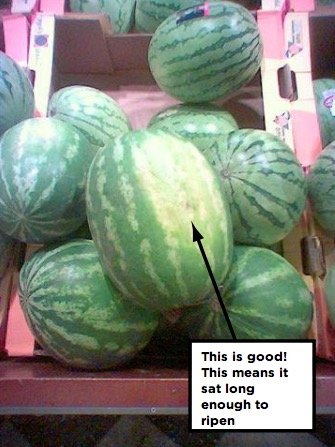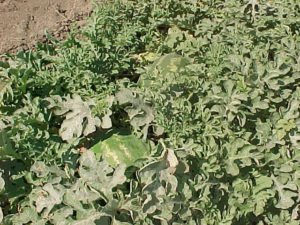

You know, the only way there is to eat a piece of good watermelon without getting it all over your shirt. Few scenes shout Americana louder, but making the dream a reality all comes down to one thing: Do you know how to pick the perfect watermelon?
The Watermelon Promotion Board says it’s as easy as 1-2-3.
- Look the watermelon over. You are looking for a firm, symmetrical melon free from bruises cuts, splits, or dents.
- Lift it up. The watermelon should be heavy for its size. Watermelon is 92 percent water, so most of its weight is juice. If the melon doesn’t feel heavy for its size, it could be under-ripe or dehydrated.
- Turn it over. The underside of the watermelon should have that large, creamy yellow spot from where it sat on the ground and ripened in the sun.

How To Pick the Perfect Watermelon? Some Say Look for Ugly
If you troll the internet a bit, you’ll find fanatics of the pink, pulpy flesh offering additional tips and tactics on how to pick the perfect watermelon. And much of the advice is based on the idea that there’s more to it than meets the eye. Here’s just some of that advice:
Surface Texture – when you rub your fingers over the melon rind it should feel slightly bumpy. A very smooth surface can be an indication of a young, under-ripe melon. The surface should be dull. A shiny appearance shows it hasn’t ripened yet.
Thumping – the age-old technique for judging the ripeness of a watermelon is to press your ear to the rind and rap it with your knuckles. You want to hear a deep, hollow “thud”. If the thump sounds “tight” or higher pitched, it’s probably an underripe melon.
Webbing – Look for that brown rough webbing watermelons often get. This is actually a form of scarring that begins when the flower that produces the fruit is pollinated by bees or other insects. The more it’s pollinated, the more it’s scarred (webbed), and the more sugar in the melon, the sweeter it is.
Oozing – The idea that your watermelon is oozing anything can be unappealing. If you come across a melon anywhere that’s foaming from a crack or hole in the rind, avoid that one and look for another. However, if you find a melon that has oozed hard, black nodules on the outside, it’s a good one. That’s not bugs or rotting – it’s sugar that’s seeped out of the melon because it just couldn’t hold it all. Should be a really sweet one.

Is a Seeded or Seedless Watermelon Better?
If you are a believer that watermelons with old-fashioned black seeds taste better than the newer seedless varieties, you may find yourself on quite a quest. Once again, according to the experts at the National Watermelon Promotion Board, less than 20 percent of the watermelons sold in grocery stores today are seeded varieties.
The presence or lack of seeds shouldn’t have anything to do with flavor. In taste tests where blindfolded subjects taste equally ripe watermelon flesh side-by-side, most can’t discern between the varieties. Other variables like the particular growing season, how long ago the melon was picked, how much rain it received during the growing season, where it was grown, the regional soils and more have a far greater impact on flavor than whether it has seeds or not.
But if you want the old-time front porch or campsite fun of spittin’ seeds, then you’ll have to seek out a seeded variety of melon. It seems like those varieties tend to be available a bit later in the season, so remember, good things come to those who wait … but until then, enjoy the seedless melons on every hot day of the summer.











